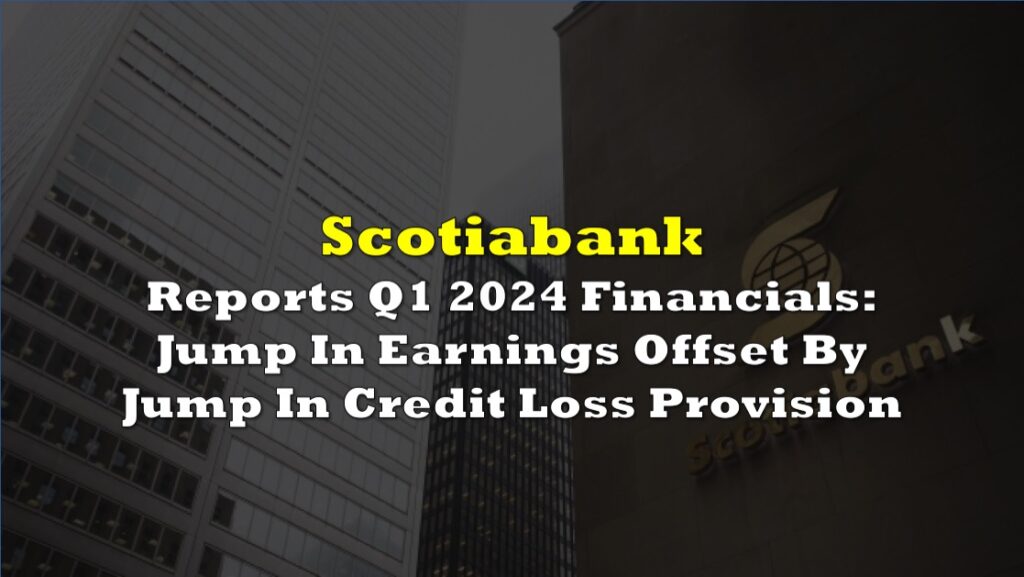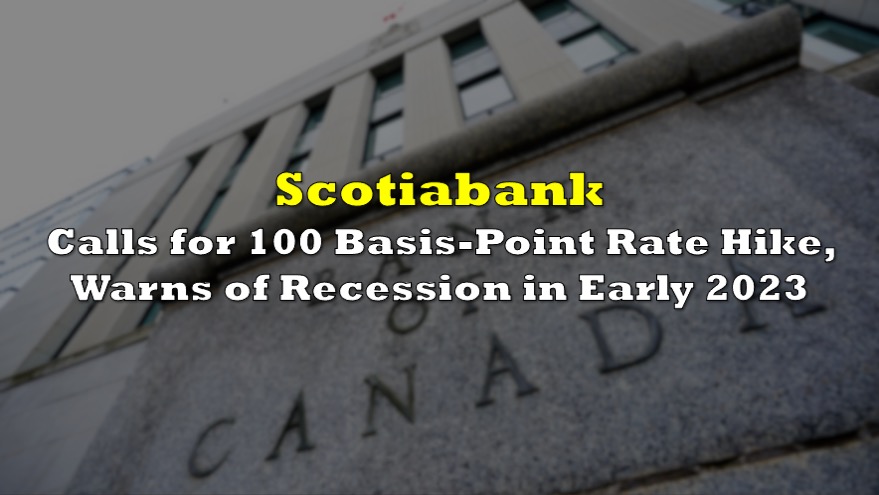The Bank of Nova Scotia (TSX: BNS), commonly known as Scotiabank, has released its fiscal 2024 financial results, reporting a net income increase to $7.89 billion, up from $7.45 billion in 2023. Adjusted net income also rose modestly to $8.63 billion from $8.36 billion in the previous year, underscoring challenges in sustaining earnings momentum amid a dynamic economic landscape.
Earnings per share (EPS) on a diluted basis improved to $5.87, slightly higher than the $5.72 achieved in 2023. Adjusted EPS, however, slipped marginally to $6.47 from $6.48.
The return on equity (ROE) saw a minor decline, with reported ROE at 10.2%, down from 10.3%, and adjusted ROE at 11.3%, falling short of the 11.6% reported last year. These figures indicate that while Scotiabank delivered incremental growth, it is underperforming relative to its aspirational targets of 14% ROE and over 7% EPS growth.
In the fourth quarter of 2024, Scotiabank posted a net income of $1.69 billion, a notable 24.8% increase from the $1.35 billion recorded in the same quarter of 2023. However, this represented a sequential decline of 12% compared to the third quarter’s $1.91 billion. Adjusted net income for Q4 2024 reached $2.12 billion, up significantly from $1.64 billion a year earlier but down from $2.19 billion in Q3.
Diluted EPS for the quarter stood at $1.22, rising from $0.99 in Q4 2023 but dropping from $1.41 in the prior quarter. The adjusted EPS followed a similar pattern, climbing to $1.57 from $1.23 in Q4 2023 but falling short of the $1.63 achieved in Q3.
For fiscal 2024, total revenue rose 4.5% to $33.67 billion from $32.21 billion in 2023. Net interest income increased to $19.25 billion, up from $18.26 billion, supported by loan growth and a modest expansion in net interest margin to 2.16% from 2.12%. Quarter-over-quarter, net interest income edged higher to $4.92 billion in Q4 from $4.86 billion in Q3, reflecting stable loan demand.
Non-interest income for the year reached $14.42 billion, a modest rise from $13.95 billion in 2023, driven by wealth management fees and trading revenues. However, quarterly non-interest income of $3.60 billion in Q4 showed stagnation compared to Q4 2023’s $3.61 billion, highlighting challenges in diversifying revenue streams in a competitive market.
Annual non-interest expenses grew by 3% to $19.70 billion from $19.12 billion, reflecting higher personnel costs, technology investments, and business development activities. While the bank achieved positive operating leverage of 1.5% on a reported basis and 2.3% on an adjusted basis, the relatively modest improvement underscores room for greater cost discipline. For Q4, non-interest expenses surged to $5.30 billion, up 7% sequentially from $4.95 billion in Q3, largely due to technology-related expenses and performance-based compensation.
Provisions for credit losses climbed sharply to $4.05 billion in 2024 from $3.42 billion in 2023, an 18.4% increase, reflecting heightened impairments in retail and commercial portfolios. Quarter-over-quarter, credit loss provisions eased slightly to $1.03 billion in Q4 from $1.05 billion in Q3, driven by improved macroeconomic conditions in certain regions. However, year-over-year comparisons highlight growing concerns, as the Q4 2023 provision stood at a much lower $1.26 billion. Higher impaired loan formations, particularly in Canadian and Latin American portfolios, suggest that Scotiabank faces ongoing credit quality pressures.
By segment, Canadian Banking reported adjusted earnings of $4.28 billion in 2024, up 7% from $3.98 billion in 2023, with strong revenue contributions from margin expansion and volume growth. In Q4, Canadian Banking delivered $1.06 billion in net income, rising significantly from $793 million in the same period last year but slightly below the $1.11 billion achieved in Q3.
International Banking adjusted earnings grew by 11% to $2.86 billion in 2024, aided by foreign exchange gains and cost management. However, the segment remains exposed to credit risks, as evidenced by rising provisions in Latin American retail markets. Adjusted earnings for Global Wealth Management increased by 10% to $1.61 billion in 2024, supported by robust growth in assets under management, which surged 18% year-over-year to $373 billion. Global Banking and Markets, however, struggled with flat growth, posting $1.69 billion in 2024 earnings, reflecting declining loan balances and higher operating expenses.
The Common Equity Tier 1 (CET1) capital ratio increased to 13.1% from 13.0% in 2023, providing a cushion for future growth and regulatory compliance. Liquidity ratios also held strong, with a liquidity coverage ratio (LCR) of 131%, ensuring resilience against potential funding pressures.
“2024 was a foundational year as we launched our new strategy and saw early successes in revenue growth and operational improvements,” CEO Scott Thomson stated. He acknowledged the challenges ahead but expressed confidence in achieving the bank’s 2025 goals.
Scotiabank last traded at $79.79 on the TSX.
Information for this briefing was found via Sedar and the sources mentioned. The author has no securities or affiliations related to this organization. Not a recommendation to buy or sell. Always do additional research and consult a professional before purchasing a security. The author holds no licenses.









